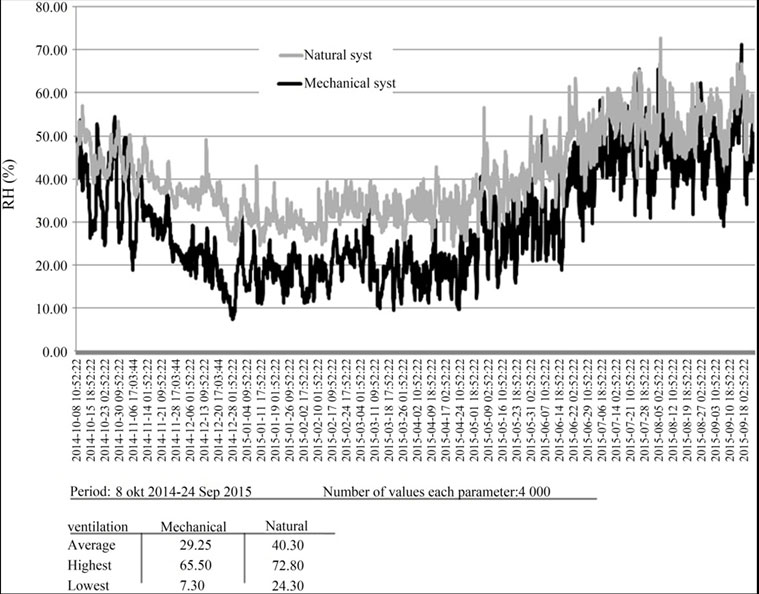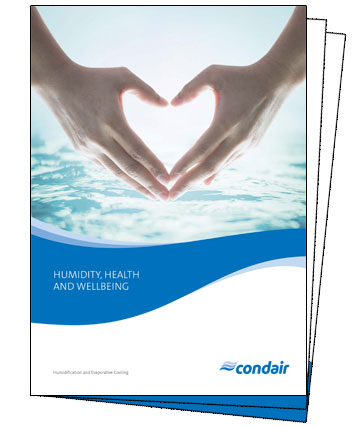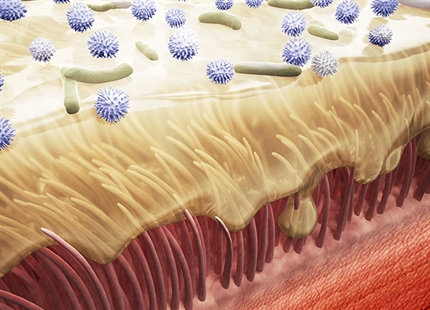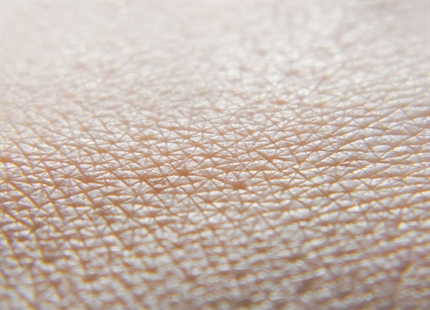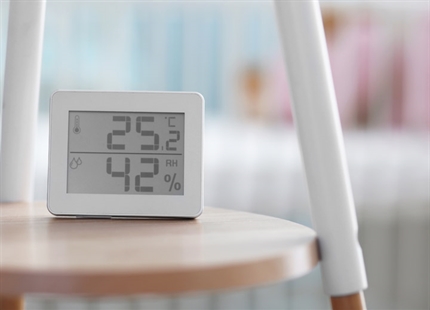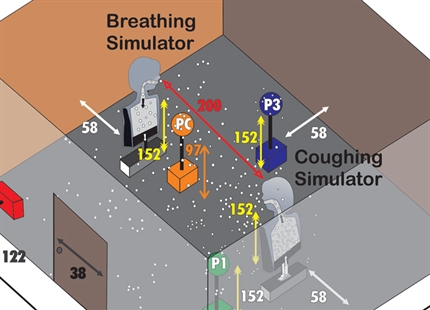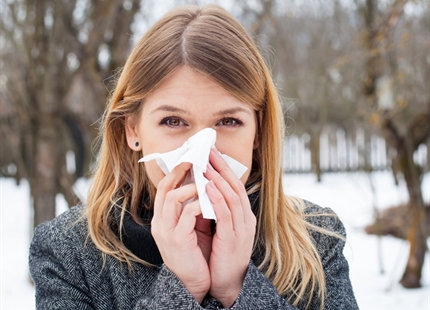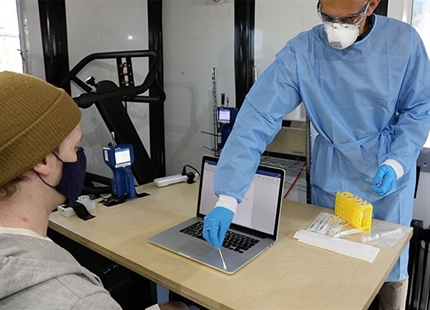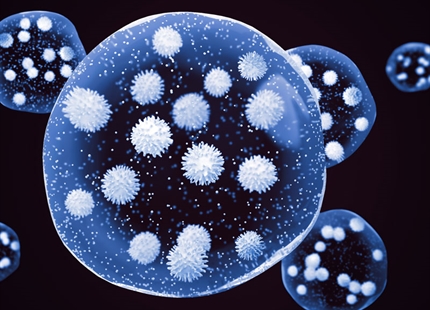Published: Feb 2016 | Journal of Environmental Protection, 7, 855-873
A comparison of relative humidity between two Swedish buildings with different ventilation solutions
Alsmo T, Alsmo C
Abstract
The purpose of this study was to investigate how the relative humidity differed between two buildings, one with natural ventilation and the other with mechanical ventilation.
An office building in central Sweden, mechanically ventilated, where occupants were complaining for many years about dryness and bad indoor air quality, was compared with a naturally ventilated similar building.
The climate measurements included indoor and outdoor RH and temperature in the period from October 2014 to September 2015.
Results
The measurement results indoors show that there is generally lower relative humidity (%RH), in the mechanically ventilated building than in the building with natural ventilation (see fig. 1).
Relative humidity below 40% is an indication that health problems can affect people. The humidity drops below this level regularly from the beginning of October, in the building with the mechanically ventilated system, and is constantly below this level until the middle of June. That is, this negative situation for the indoor environment continues for seven months. There after the level is kept more frequently above 40%.
For the building with the natural ventilation system the RH level below 40% is passed in mid-November and being re-stabilized above 40% in May. That is, this situation is going on for five months.
Conclusion
The mechanically ventilated system creates, from a health perspective, a very low relative humidity, and this fact must be taken into consideration for the existing systems as well as the planning of new ventilation systems.
It is necessary in view of the Swedish climate conditions that henceforth, consider the relative humidity in calculations and installation of ventilation systems.
An important national (Swedish) issue to come to terms with the dry indoor air is the authority requirement for ventilation flows. This requirement is based on maintaining a carbon dioxide level that only rarely exceeds 1000 ppm, which governs the ventilation design. This situation dilutes the negative effect on the relative humidity and further dries out the indoor air. This requirement must be questioned as it has been shown that it is based on inadequately substantiated materials from the authorities and where the corresponding level in the EU is 5000 ppm.

Dry air and airborne infection
Low humidity acts as a conduit for viruses and airborne bacteria to disperse and travel around a building and threaten all occupants.
Read moreDry air and our airway defence system
Low humidity dries our mucous membranes and inhibits our body's natural defence against airborne germs, viruses and bacteria.
Read moreDry air and our skin
Low humidity dries the outer layer of our skin leading to itchiness, cracking and dermatological problems.
Read moreDry air and our eyes
Low humidity dries our eyes' precorneal tear film making us prone to eye irritations and contact lens discomfort.
Read more